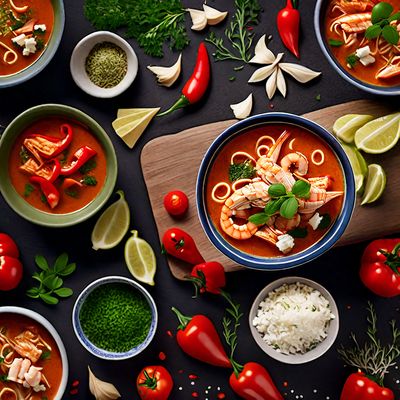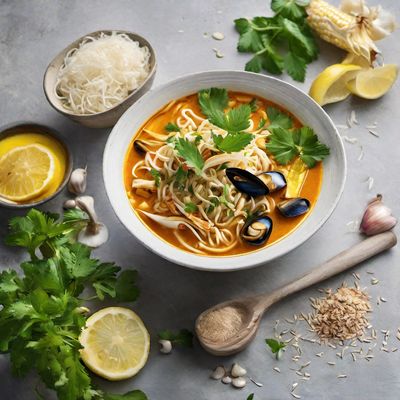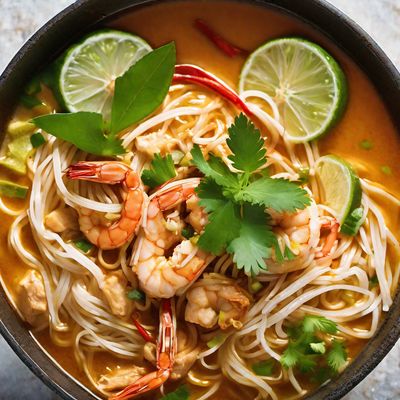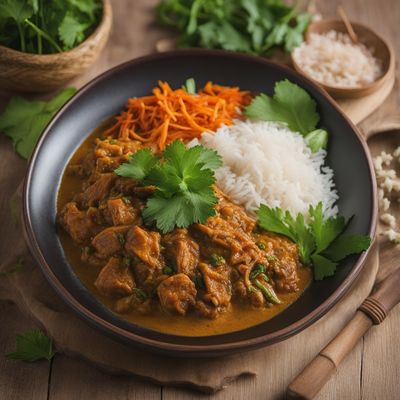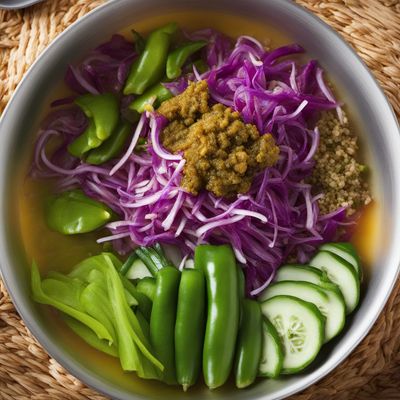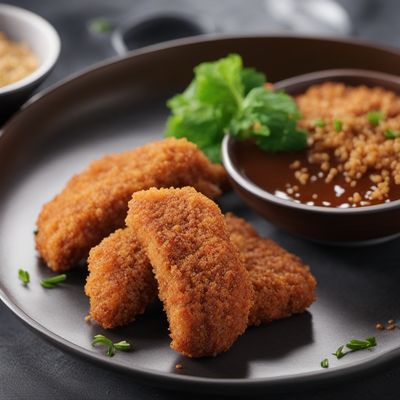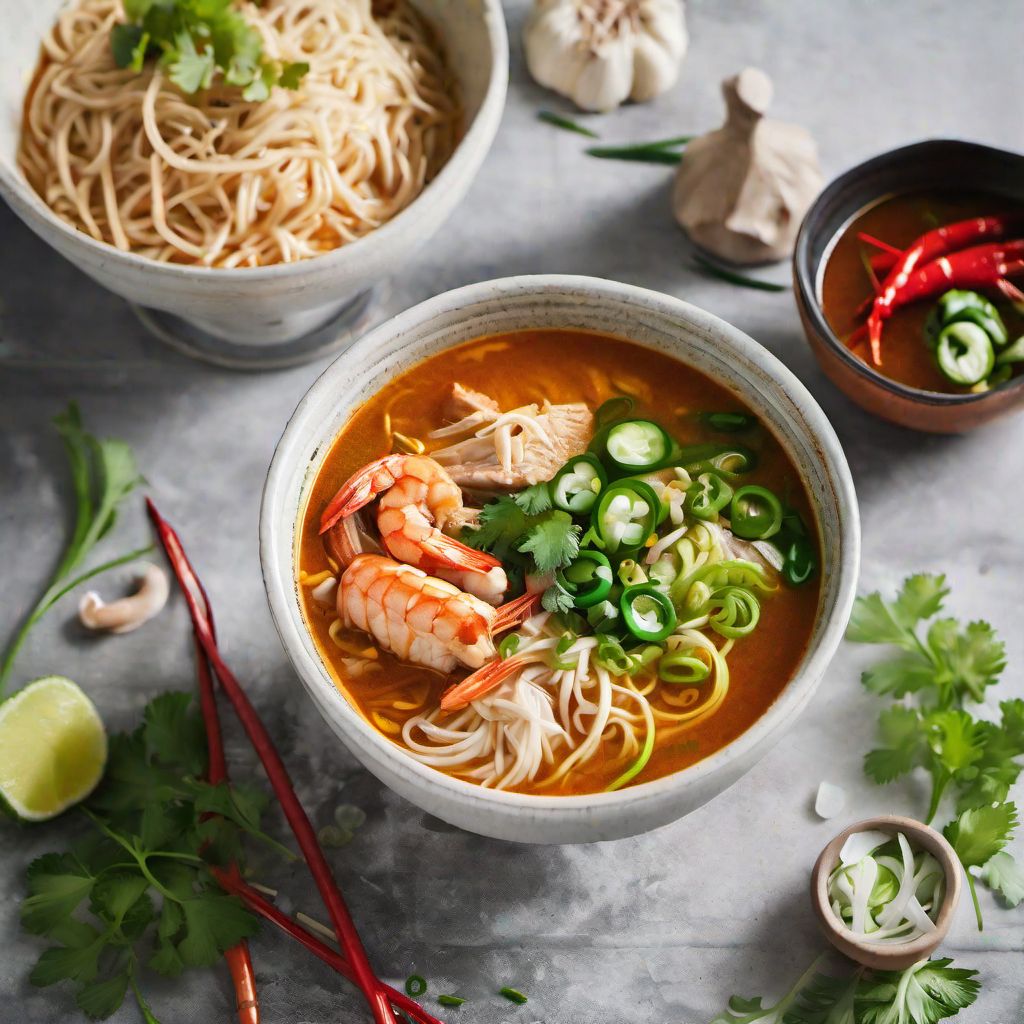
Recipe
Japanese-style Laksa
Sakura Laksa: A Fusion of Malaysian and Japanese Flavors
4.8 out of 5
In the realm of Japanese cuisine, where delicate flavors and precise techniques reign supreme, we introduce Sakura Laksa. This fusion dish combines the rich and aromatic Malaysian Laksa with the refined simplicity of Japanese cuisine. The result is a harmonious blend of flavors that will transport your taste buds to a unique culinary experience.
Metadata
Preparation time
20 minutes
Cooking time
15 minutes
Total time
35 minutes
Yields
4 servings
Preparation difficulty
Medium
Suitable for
Pescatarian, Dairy-free, Gluten-free (use gluten-free soy sauce), Low carb (omit rice noodles, substitute with zucchini noodles)
Allergens
Shellfish (shrimp), Eggs
Not suitable for
Vegan (contains chicken broth and eggs), Nut-free (contains coconut milk)
Ingredients
While the original Malaysian Laksa is known for its bold and spicy flavors, the Japanese-style Laksa takes a more subtle approach. The spiciness is toned down, and the focus is on enhancing the umami flavors with the addition of Japanese ingredients such as miso and dashi. The toppings are also adapted to include traditional Japanese ingredients like nori seaweed and soft-boiled eggs. We alse have the original recipe for Laksa, so you can check it out.
-
200g (7 oz) rice noodles 200g (7 oz) rice noodles
-
500ml (2 cups) chicken or vegetable broth 500ml (2 cups) chicken or vegetable broth
-
200ml (3/4 cup) coconut milk 200ml (3/4 cup) coconut milk
-
2 tablespoons miso paste 2 tablespoons miso paste
-
1 tablespoon soy sauce 1 tablespoon soy sauce
-
1 tablespoon mirin 1 tablespoon mirin
-
1 tablespoon vegetable oil 1 tablespoon vegetable oil
-
200g (7 oz) chicken breast, thinly sliced 200g (7 oz) chicken breast, thinly sliced
-
100g (3.5 oz) shrimp, peeled and deveined 100g (3.5 oz) shrimp, peeled and deveined
-
1 tablespoon grated ginger 1 tablespoon grated ginger
-
2 cloves garlic, minced 2 cloves garlic, minced
-
1 red chili, sliced 1 red chili, sliced
-
2 spring onions, sliced 2 spring onions, sliced
-
50g (1.8 oz) bean sprouts 50g (1.8 oz) bean sprouts
-
2 soft-boiled eggs 2 soft-boiled eggs
-
2 sheets nori seaweed, cut into strips 2 sheets nori seaweed, cut into strips
-
Fresh cilantro, for garnish Fresh cilantro, for garnish
-
Lime wedges, for serving Lime wedges, for serving
Nutrition
- Calories (kcal / KJ): 450 kcal / 1884 KJ
- Fat: 20g (Saturated Fat: 12g)
- Carbohydrates: 40g (Sugars: 5g)
- Protein: 25g
- Fiber: 3g
- Salt: 2g
Preparation
-
1.Cook the rice noodles according to the package instructions. Drain and set aside.
-
2.In a large pot, heat the vegetable oil over medium heat. Add the sliced chicken and cook until lightly browned.
-
3.Add the minced garlic, grated ginger, and sliced red chili to the pot. Cook for another minute until fragrant.
-
4.Pour in the chicken or vegetable broth and bring to a simmer.
-
5.In a small bowl, whisk together the miso paste, soy sauce, mirin, and coconut milk. Add this mixture to the pot and stir well.
-
6.Add the shrimp and simmer for 3-4 minutes until cooked through.
-
7.Divide the cooked rice noodles among serving bowls. Ladle the hot broth with chicken and shrimp over the noodles.
-
8.Top each bowl with bean sprouts, sliced spring onions, nori seaweed strips, and a soft-boiled egg.
-
9.Garnish with fresh cilantro and serve with lime wedges on the side.
Treat your ingredients with care...
- Rice noodles — Follow the package instructions for cooking time as it may vary. Rinse with cold water after cooking to prevent sticking.
- Soft-boiled eggs — Cook the eggs for 6-7 minutes for a slightly runny yolk or 8-9 minutes for a firmer yolk.
Tips & Tricks
- For a spicier version, add a teaspoon of Japanese chili paste (rayu) or chili oil.
- Customize the toppings by adding sliced bamboo shoots, corn kernels, or sliced fish cake.
- If you prefer a vegetarian version, substitute the chicken and shrimp with tofu or your favorite vegetables.
- Adjust the consistency of the broth by adding more coconut milk or broth according to your preference.
- To enhance the umami flavors, sprinkle some furikake (Japanese rice seasoning) on top before serving.
Serving advice
Serve the Sakura Laksa hot in individual bowls. Squeeze fresh lime juice over the soup just before eating to add a tangy kick. Enjoy with chopsticks and a spoon to savor the noodles, broth, and toppings together.
Presentation advice
Garnish each bowl of Sakura Laksa with a sprinkle of fresh cilantro and a lime wedge on the side. The vibrant colors of the toppings, such as the green spring onions and nori seaweed, will add visual appeal to the dish.
More recipes...
More Malaysian cuisine dishes » Browse all

Satay celup
Satay Celup
Satay celup is a popular street food in Malaysia, made with skewered meat or vegetables that are dipped in a spicy peanut sauce.

Pan mee
Flat Flour Noodles
Pan mee is a Malaysian noodle dish that is popular in Kuala Lumpur and other parts of the country. It is a simple and comforting dish that is...

Keropok lekor
Fish crackers
Keropok lekor is a traditional Malaysian snack made with fish and sago flour.
More Japanese cuisine dishes » Browse all

Buri nigiri sushi
Adult Yellowtail Nigiri
Buri nigiri sushi is a type of sushi that is made with yellowtail fish. It is a popular sushi dish that is enjoyed by sushi lovers around the world.

Rice Burger
Rice Burger is a Japanese burger that is made with rice patties instead of buns. It is a popular dish in Japan and is often served at fast food...

Natto Curry
Natto curry
Natto Curry is a Japanese dish that is made with fermented soybeans and a spicy curry sauce. It is known for its unique and bold flavors.
